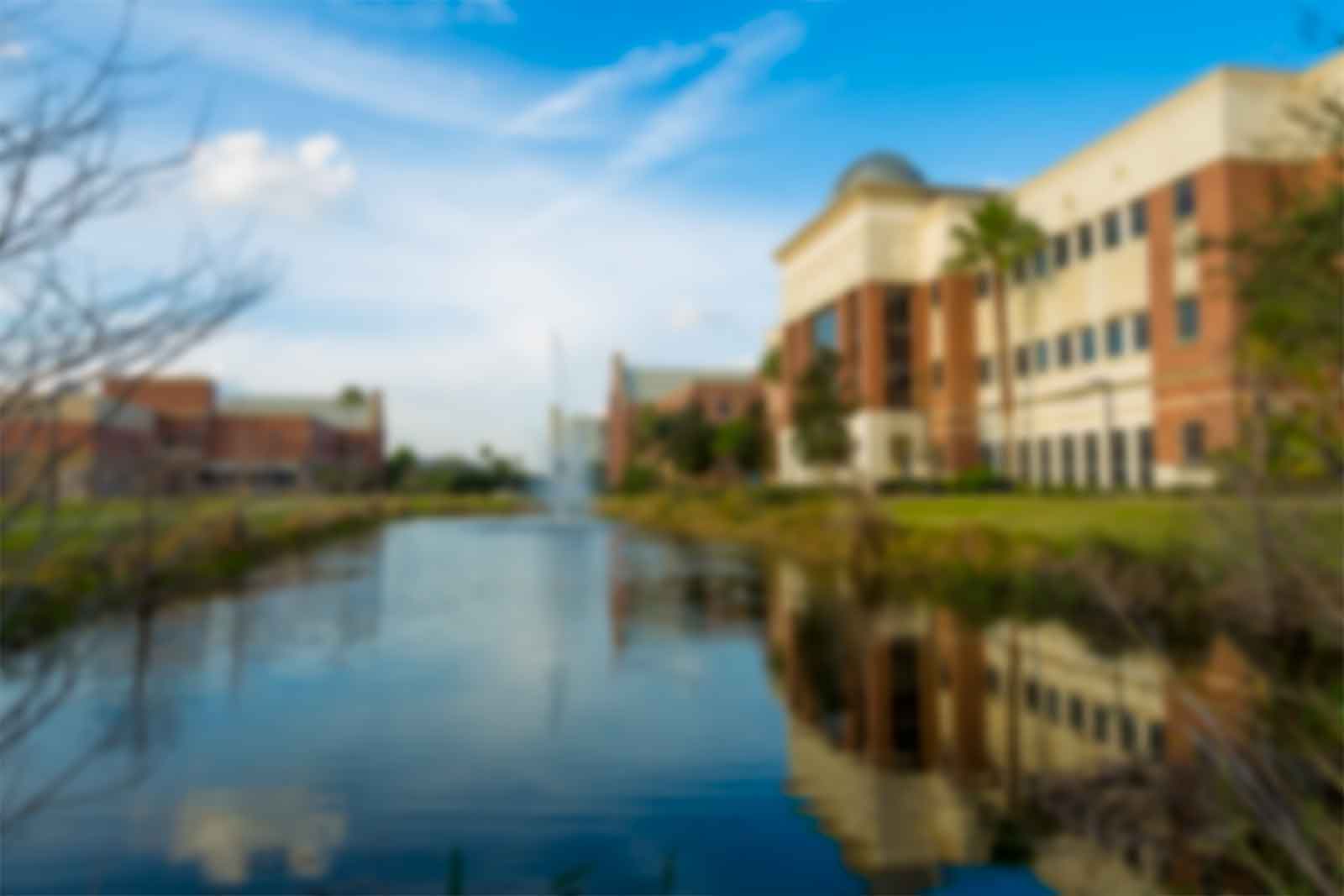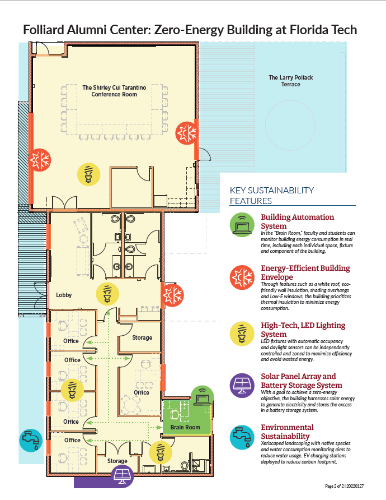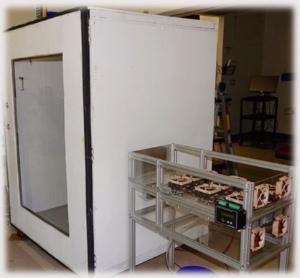Areas Of Research
Sustainable and Resilient Built Environments
Buildings are responsible for nearly 40% of overall energy consumption in the United States. Net-zero energy buildings (ZEB) are high performance buildings which benefit from optimal design and state of the art technologies to minimize energy consumption while producing their own energy requirements on site. Our work in this area has been focused on modeling, optimization and analysis of building energy systems including building envelope, innovative cooling/heating systems, and application of renewables for on site power generation. We use various computer simulation tools and different approaches including numerical analysis and machine learning techniques in this area. Below you can read the highlight of our recent efforts in this area:
Space Coast RESCUE (REsilience Solutions for Climate, Urbanization, and Environment)
As part of the climate resilience initiative led by Florida Tech, funded by the U.S. Department of Energy and in collaboration with the Argonne National Laboratory and local partners, a key focus is on enhancing building energy resilience within underserved coastal communities. Efforts in this area include conducting comprehensive building energy assessments and drone-supported thermal mapping to assess current energy efficiencies, identifying opportunities for reducing consumption and improving performance. Model simulations are being performed using downscaled future climate data to evaluate the impacts of climate change on building energy demand, particularly under conditions of increased heat stress and altered precipitation patterns. Cost-effective adaptation strategies are being developed to strengthen the energy resilience of critical infrastructure, with a focus on promoting affordable, reliable, and sustainable energy solutions. Read more at: Space Coast RESCUE
Demonstration of a Cost-Effective, Scalable Zero-Energy Commercial Building Design for Florida Climates
In collaboration with Dr. T. Nguyen and Dr. A. Fabregas (Applied Research in Energy Systems -ARES- group), we have completed the design and construction of the new Florida Tech Alumni center which is a zero energy building, through the REET grant from Florida Department of Agriculture and Consuming Services, the matching cost from multiple industry partners and Florida Tech (total of about $800,000). The building is serving as a key research platform for our group and is equipped with state-of-the-art energy efficient end-users, solar photovoltaic panels, batteries for energy storage, as well as building automation system.
See the recent news release on this project in the Spring 2021 issue of the Florida Tech magazine.
See the project's flyer at: Florida Tech ZEB-Flyer-pdf
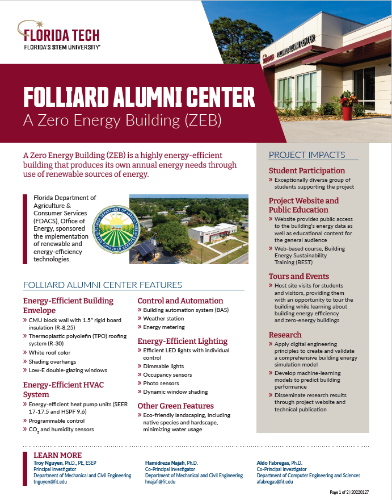
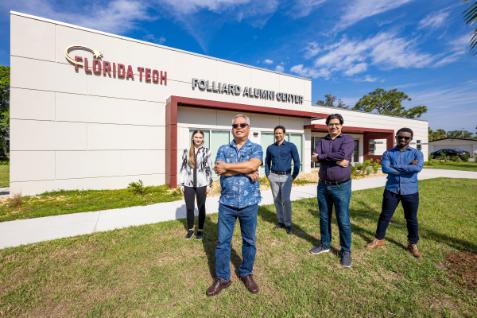
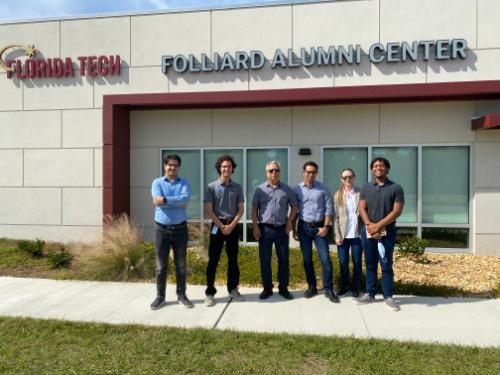
Designing and Optimization of Energy and Thermal Systems
Thermal systems are present in variety of applications: from buildings to industrial facilities and outer space applications! At ISETS, one of our focuses is designing and optimization of thermal systems. A few examples are highlighted below:
Thermoelectric Based Cooling Systems
Thermoelectric (TE) systems offer a solid state, scalable and environmental friendly technology for producing cooling/heating effect. In one of our recent projects (funded by ASHRAE) we have developed an apparatus to study the application of thermoelectric systems for building cooling purposes. The project features both integrated and non-integrated designs through a radiant ceiling panel and a separate convective cooling/dehumidification unit respectively. The TE modules are integrated in the ceiling panel, facilitating a cool ceiling that exchange thermal energy with the occupants through radiation and convection. The separate unit facilitates ventilation, cooling and dehumidification.
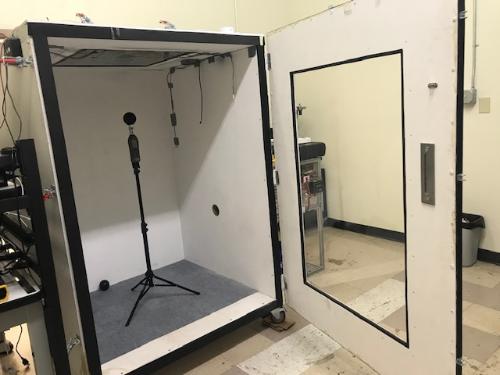
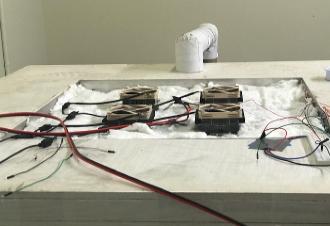
Microgravity Test of Autonomous Multiple Cycle Farming System
The project is focused on building and testing an Autonomous Multiple Cycle Farming System (AMCF) that shall grow plants autonomously through robotic functions with limited human interaction for multiple cycles while aboard systems such as the International Space Station (ISS). Funded by NASA, the proposed system will make significant improvement to the currently in use systems for ISS such as the Vegetable Production System (VEGGIE). The project is led by Dr. M. Wilde and the ORION Lab at Florida Tech. The apparatus was successfully tested in a series of zero-g flights in Nov 2021.
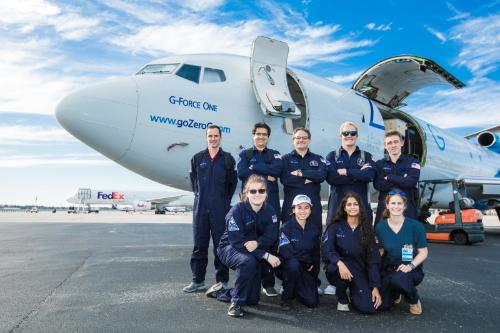
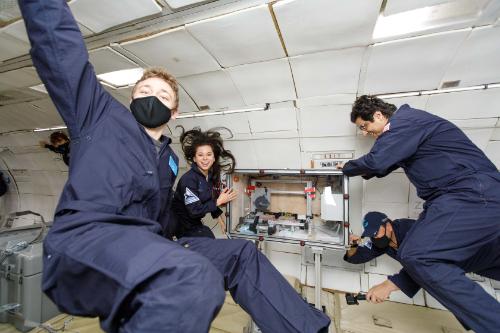
Renewable Energy
Transitioning into a more sustainable future necessitates more innovations in the areas of renewable energy. Our work on renewable energy has been focused on developing innovative hybrid energy systems (such as photovoltaic-thermoelectric systems), biofuels and application of machine learning algorithms in designing and optimization of renewable energy systems. See highlights of some of our recent works in this area:
Assessing Emissions of a Gas Turbine Operated with Biodiesel
the unique nature of the operating environment for aviation fuels has complicated the application of biofuels to the aviation community. To study this problem further, a functional jet engine test cell is constructed at the Larsen Motorsports facility. Construction was achieved over the course of two years led by Master student D. Rochelle, providing valuable design, engineering, and fabrication experience for dozens of undergraduate students. Using this test cell, experiments have been conducted that explores the gaseous emissions of an axialflow turbojet engine operated using a spectrum of biodiesel/Jet-A blends as fuel.
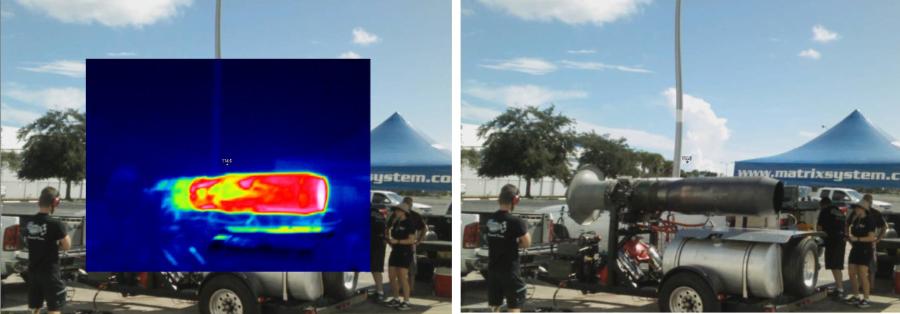
Inverse heat conduction problems (IHCP)
Inverse heat conduction problems (IHCPs) are of great significance in many industrial applications. A particular application of this class of problems is in evaluating surface heat flux using temperature measurement data. In many applications, the direct measurement of surface heat flux is difficult, if not impossible, and therefore developing solution techniques for IHCPs that allows estimation of surface heat flux using temperature measurement data from the interior points becomes very useful. At ISETS, we are developing innovative solutions to complex IHCPs involving temperature dependent material properties, multi-layer and multi-dimensional domains and moving boundary problems. See some of the highlights of our research in this area in our recent publications:
- O. Uyanna, H. Najafi, A novel solution for inverse heat conduction problem in one-dimensional medium with moving boundary and temperature-dependent material properties, International Journal of Heat and Mass Transfer, V. 182, 2022, 122023. https://doi.org/10.1016/j.ijheatmasstransfer.2021.122023
- O. Uyanna, H. Najafi and B. Rajendra, An inverse method for real-time estimation of aerothermal heating for thermal protection systems of space vehicles, International Journal of Heat and Mass Transfer, Volume 177, 2021, 121482. https://doi.org/10.1016/j.ijheatmasstransfer.2021.121482
- O. Uyanna and H. Najafi, Thermal protection systems for space vehicles: A review on technology development, current challenges and future prospects, Acta Astronautica, Volume 176, November 2020, Pages 341-356. https://doi.org/10.1016/j.actaastro.2020.06.047
- H. Najafi, O. Uyanna and J. Zhang, Application of Artificial Neural Network as a Near-Real Time Technique for Solving Non-Linear Inverse Heat Conduction Problems in a One-Dimensional Medium With Moving Boundary, ASME Summer Heat Transfer Conference, Paper No. SHTC2020-9054, July 2020.
- O. Uyanna, H. Najafi, A Near Real-Time Solution Approach for Surface Heat Flux Estimation in One Dimensional Inverse Heat Conduction Problems with Moving Boundary, ASME Summer Heat Transfer Conference, Paper No. HT2019-3458, Bellevue, WA, July 2019.
- H. Najafi, K. A. Woodbury, James V. Beck, Real Time Solution for Inverse Heat Conduction Problems in a Two-Dimensional Plate with Multiple Heat Fluxes at the Surface, International Journal of Heat and Mass Transfer, Volume 91 (2015), Pages 1148–1156.
- H. Najafi, K. A. Woodbury, Online Heat Flux Estimation Using Artificial Neural Networks as a Digital Filter Approach, International Journal of Heat and Mass Transfer 91 (2015) 808–817.
- H. Najafi, K. A. Woodbury, J. V. Beck, Ned R. Keltner, Real-time heat flux measurement using directional flame thermometer, Journal of Applied Thermal Engineering, Volume 86, 5 July 2015, Pages 229–237.

 Give to Florida Tech
Give to Florida Tech 